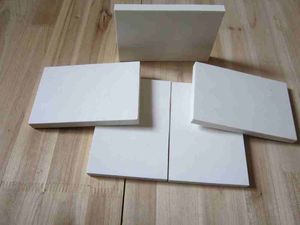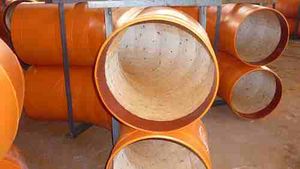Difference between revisions of "Ceramic Lined Materials"
Jump to navigation
Jump to search
(Created page with "Category:Corrosion{{Knoppen}} <noinclude><!------------------------------------------------ * READ THIS FIRST * Only edit this page if you can improve the content. * Impr...") |
|||
| Line 1: | Line 1: | ||
[[Category:Corrosion]]{{Knoppen}} | [[Category:Corrosion]]{{Knoppen}} | ||
[[File:Ceramic_lined_material_01.jpg|thumb|right|Ceramic Lined Materials]] | |||
* | [[File:Ceramic_lined_materials_02.jpg|thumb|right|Ceramic Lined Materials]] | ||
* | '''Ceramic lined materials''' provide the extra protection of ceramic, which is particularly effective in applications requiring impact and sliding abrasion resistance. These ensure wear-resistant ceramic cylinders to resilient rubber or urethane, to create tough, durable lining systems that extend wear life on your production line, while reducing maintenance and downtime. Well-suited to the rigors of crushed rock, mineral concentrates, and other abrasive materials, the lining systems are ideal for heavy-wear and impact applications. | ||
* | |||
==General features:== | |||
*High pressure and heat during the vulcanizing process creates an incredible bond between rubber and ceramic. | |||
*Ceramics will stay in place until completely worn. | |||
*Thickness and formulation can very to create a custom system for your installation. | |||
*Urethane/Ceramic liners can be an alternative solution in applications where chemicals in contact with liners can adversely affect rubber compounds. | |||
*Can be engineered to change size, placement, and spacing of ceramic cylinders to meet the right impact level and abrasion resistance for your particular application. | |||
-Ceramic is good for sliding abrasion | |||
-Rubber is excellent for impact abrasion | |||
-The combination is ideal for sliding/impact abrasions | |||
==Video== | |||
<youtube>w6ZVSLIFAOQ</youtube> | |||
Revision as of 14:31, 20 July 2013
Ceramic lined materials provide the extra protection of ceramic, which is particularly effective in applications requiring impact and sliding abrasion resistance. These ensure wear-resistant ceramic cylinders to resilient rubber or urethane, to create tough, durable lining systems that extend wear life on your production line, while reducing maintenance and downtime. Well-suited to the rigors of crushed rock, mineral concentrates, and other abrasive materials, the lining systems are ideal for heavy-wear and impact applications.
General features:
- High pressure and heat during the vulcanizing process creates an incredible bond between rubber and ceramic.
- Ceramics will stay in place until completely worn.
- Thickness and formulation can very to create a custom system for your installation.
- Urethane/Ceramic liners can be an alternative solution in applications where chemicals in contact with liners can adversely affect rubber compounds.
- Can be engineered to change size, placement, and spacing of ceramic cylinders to meet the right impact level and abrasion resistance for your particular application.
-Ceramic is good for sliding abrasion
-Rubber is excellent for impact abrasion
-The combination is ideal for sliding/impact abrasions
Video

